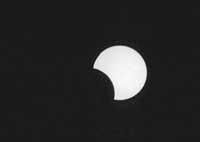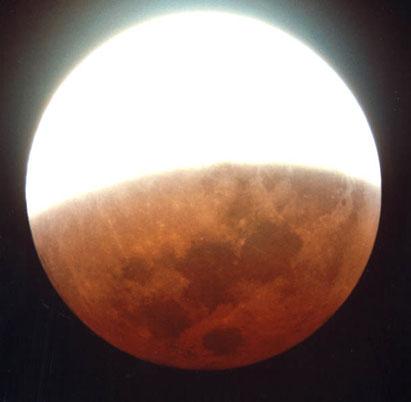When the shadow illuminates
2003/11/23 Rementeria Argote, Nagore - Elhuyar Zientziaren Komunikazioa
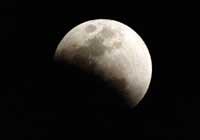
Conceptually it was a tremendous change to recognize that the Earth was not flat. The scholars of Antiquity gave them much to think about. Until then, believing that the Earth was flat, was infinite or, on the contrary, could not remember if it had a limited end. The legends that describe the end of the world full of monsters are known.
But the fact that the Earth was spherical meant that it had a certain size and that at the same time it had no end. How much was it? There is the new question that implied the recognition that the Earth was round.
With the shade
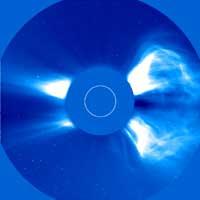
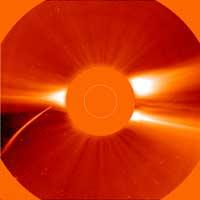
How to answer this new question? With shade. In fact, when the geometrists thought to take advantage of the physical character of the shadow, they came very close, and Eratosthenes, for example, used it to measure the size of the Earth.
Although the basis of the calculation made by Eratosthenes is relatively simple, its precision continues to surprise experts. In fact, the Earth measures 40.065 km in the equator, we know it with current techniques, and the Greek geometrist measured 80 km less two centuries before the birth of Christ.
Eratosthenes was responsible for the library of Alexandria. He knew that in a southernmost village in Egypt, in Syene (today Asua), at noon on June 21, in a well, the rays of the Sun reached the bottom and, at the same time, the columns had no shadow. This meant that the Sun was totally perpendicular to the Earth. On the other hand, on the same day and at the same hour, in Alexandria the columns had shade, since the solar rays did not arrive directly, but obliquely.
Taking into account that the solar rays that arrive at Syen and Alexandria are parallel, the angle between a column of Alexandria and its shadow was equal to the angle between the rays that go from the two cities to the center of the Earth. Thus, with the height of the column of Alexandria and the length of the shadow, he calculated that angle, and being measured the distance between the two cities, he was able to calculate the radius of the Earth and with it that of the entire circumference, that is, the perimeter of the planet Earth.
Dark light dark light
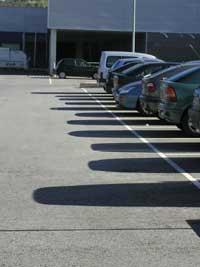
We are used to seeing shadows everywhere in everyday life.
In addition to knowing the Earth, the shadow has served to locate the surrounding stars. For example, to calculate the distance from the Earth to the Moon or to the Sun. To facilitate the measurement, eclipses and lunar phases were used and, in short, eclipses and lunar phases are due to shade. For example, the eclipse of the Moon occurs when the Earth turns off the Moon, or rather, when the Moon enters the shadow of our planet.
Aristarchus was the first to calculate the relationship between the distances from Earth to the Sun and the Moon. He made the measurement on half moon and concluded that the Sun is nineteen times farther than the Moon.
However, seen from the Earth, the Sun and the Moon appear to be almost the same size, so if the Sun is so far away, it is much larger than the Moon and also larger than the Earth itself. For those who believed that Earth was the center of the universe, was a hard blow, was the center of the universe the Sun? From this doubt came the first heliocentrist theories.
On the other hand, to know that the Moon has relief, Galileo looked at the shadows with the telescope. In fact, all the stars, except the Earth, were considered perfect, rounded and without any kind of notch. And seeing that the Moon also had mountains and valleys, they thought that in the universe the Earth was not such a special structure and that there could be other planets like the Earth.
The best of the sun...
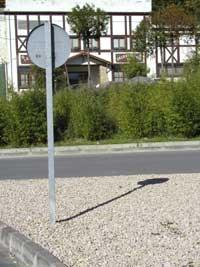
Today we know the universe much better, of course. But the shadow remains very useful in astronomy. In many of the photographs taken from the SOHO observatory, specially built for solar inspection, for example, the center of the Sun is hidden to prevent the strongest light rays from preventing you from seeing the environment. It is a coronary instrument that acts as a solar eclipse.
It is clear that the shadow is necessary to see clearer things. And also in everyday life we can find many examples of this. And it is that our eyes are accustomed to the regularity of the shadow. Therefore, images without shadows seem absolutely unreal to us.
The light and shade are two sides of the same coin, and if among us there are large suns, no less defenders of the shade. If you are one of those who spend the summer to the fullest, you have reasons to defend the greatness and need of the shadow.
Published in 7K.

Gai honi buruzko eduki gehiago
Elhuyarrek garatutako teknologia




